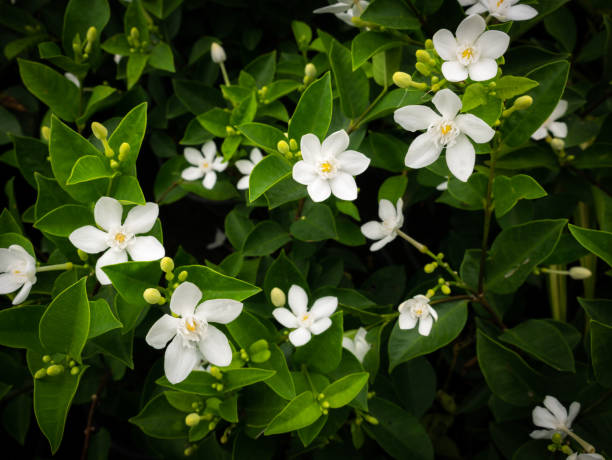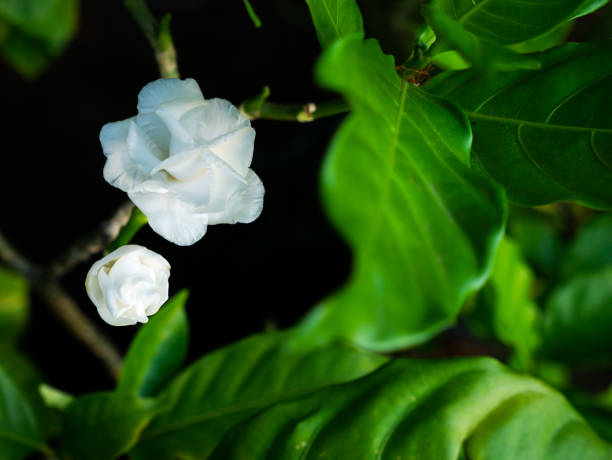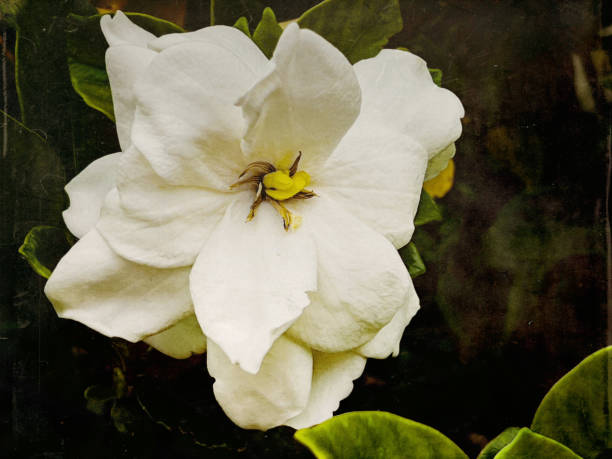Are Gardenia Plants Perennial? Know Their Average Lifespan!
Yes, Gardenia plants are perennial. This means that they will continue to grow and produce flowers year after year, as long as they are given the proper care. However, some gardenia plants behave like annuals, depending on the location and growing conditions in which they are cultivated, while others behave like perennials.
Table of Contents
Life Cycle
Most Gardenia plants are expected to blossom in two to three years after being started from seed, and in just one year after being propagated from cuttings. So this is a slow-growing and long-lived plant. Propagation methods include cutting tips of buds (done when leaves begin to fade), root divisions, grafting from nearby plants or seeds. Seeds can also be purchased for use indoors in warmer zones where you probably won’t have room for an established specimen outdoors. Keep your urn or pot indoors so that temperatures won’t fall below freezing if you do bring them in for the winter.
How Long Do Gardenias Live?

Average Lifespan
Gardenias may survive for up to 50 years if they are given the correct attention. Even though most mature gardenias remain between 4 and 6 feet tall, elder specimens may readily reach heights of more than 10 feet. Do not place plants near the gardenia to minimize natural resource competition; essential nutrients must reach the stems, leaves, and flowers of the gardenia to thrive. Following your selection of the ideal gardenia planting place, avoid transplanting it too regularly and mulching the area surrounding the trunk’s base. Ground disturbance is kept to a bare minimum, which promotes extended life. The use of mild daytime temperatures of up to 75 degrees Fahrenheit, along with a minimum nightly temperature of 60 degrees Fahrenheit, encourages long-term development as well.
Although they are evergreen, gardenias shed their leaves regularly to regenerate the plant, which is especially important if temperature changes occur throughout the year. The ability of the leaves to photosynthesize is critical for the shrub’s long existence, and their thick arrangement aids in keeping the shrub warm throughout the cold winter months. To take advantage of the morning light, plant your gardenia in a north-facing location. The gardenia is susceptible to sunscald and floral dieback in the afternoon sun, which can cause widespread damage to the plant. Avoid complete shadow, though, because gardenias steadily deteriorate as their energy supplies are depleted — their lifetime is drastically decreased when there is minimal photosynthetic activity on the plant.
Blooming Period
Common Gardenias usually bloom in summer, other varieties start from spring to fall. It is mostly determined by your geographical location. Gardenias have been reported to blossom in the northern hemisphere between November and December. If your gardenia is blooming in an area with extremely cold winters, it could be because the variety you have chosen is hardier than most. Very hardy varieties can bloom as early as January and some can even be found flowering in March.
Keep your gardenia indoors for the winter if you expect its foliage to wither or die on the plant due to harsh climate conditions during these months. There are also cold-tolerant forms of cultivation that may not survive colder temperatures outdoors but will tolerate indoor environments, though they complete their blooms at a much later period than standard urn gardenia.

Summer Sun Has an Effect on Gardenia Flowers
The majority of cultivars of the most widely grown species (Gardenia jasminoides) bloom in the summer, with a few exceptions that begin flowering in the spring and continue blooming into the fall. One of the latter types is the “Veitchii” gardenia, sometimes known as the “everblooming” gardenia because of its ability to bloom continuously throughout the year. It is sometimes referred to as the most trustworthy of the bloomers. All of the features of “Veitchii,” except for the fact that it is somewhat less fragrant, are present in “Kimura Shikazaki,” also known as “Four Seasons.”
Two corsage gardenias, “Mystery” and “August Beauty,” which bloom profusely in May and June, bloom a second time in late summer to early fall, bringing the total number of blooms to four. “Kleim’s Hardy” produces a profusion of blooms in the early summer, each of which has a distinct perfume. Depending on the species, all of these evergreen flowering shrubs reach a height of between 4 and 6 feet when fully grown.
Extending a Gardenia’s Season Is Possible
Gardenia flowers may have a longer flowering season if they have been properly cared for.
If they get adequate light and heat, most shrubs will bloom from May through the end of summer. A range of 5.0 to 6.0 pH units. Gardenias don’t appreciate sharing space with other plants, so it’s better to keep them out of sight.
Mid-March is the ideal time to feed a gardenia to stimulate fresh blooms. According to the Missouri Botanical Garden, you may feed your gardenias fish emulsion or blood meal. When using drip irrigation, be careful to water your plants often. The best way to stimulate fresh blooms is by removing faded or brown flowers.
Winter Bloomers Can Be Very Big Bloomers Too
For those who live in USDA zones 9 and 10, there is an additional gardenia species (G. thunbergia). Unlike G. jasminoides, this 12-foot-tall winter-blooming shrub isn’t as picky about soil conditions. However, it can’t stand cold. It becomes more vigorous and blooms more frequently as it ages. Grafted onto G. thunbergia rootstock, some of the most popular G. jasminoides varieties are considered to better absorb soil nutrients, resulting in larger flowers. If the weather continues mild, varieties like “Vietchii” and “Mystery” may continue to bloom throughout the winter.

What Factors Impact the Gardenia Bloom Time?
The following factors can have a big impact on the time it takes for your buds to open and may even cause them to remain closed.
Planting Time
At the very least, Gardenias must be sown six weeks before your area’s latest projected frost date. If you reside in a hardiness zone below 7, you should plant your Gardenias in the springtime so they have a chance to form before the first frost.
Soil
Gardenias, which grow well in acidic soil, are common. They thrive on acidic soils with pH levels ranging from 5.0 to 6.0, as long as they are well-drained and wet. Check to determine if your soil is equally loose and organic.
Watering
During their active period, Gardenias require consistent moisture to grow and bloom. After the bud tip pushes above soil level, frequent irrigation is necessary for them to look healthy instead of wilting towards the end of flowering. This means that your gardenia needs at least an inch or so of water every week from October on throughout until late spring when new growth appears. Failure to do this will result in sparse lower foliage and pale green
Light
In order for gardenias to grow, they require full light and high humidity. However, it is critical to provide them with some shade during the hottest parts of the day in order for them to fully blossom and produce blooms.
Temperature
If the daytime temperature is over 70 degrees Fahrenheit and the nighttime temperature is above 65 degrees, buds will not be developed. It is ideal to have a daytime temperature of 65°-70° degrees Fahrenheit, and a nighttime temperature of 60°-60°. During the hotter months, be careful to provide adequate shade for your flowerbeds.
Fertilizer
There are two to three fertilizer applications needed each year for gardenias. Use a Gardenia fertilizer in February-March and once in September-October to get the best results. A third application can be submitted over the summer. Since cold temperatures will harm all of the young delicate growth, fertilizing in the autumn is a terrible idea. A nitrogen level of 35 to 50 percent is ideal for fertilizer. Acidic soil is preferred by gardenias; hence, a substance that “forms acid” is advised. When you are fertilizing the annual gardenias that grow in your yard, choose a granular fertilizer with potassium such as Kel-Fel. There is no need to purchase a special flower.
Mulching
It is a key factor to grow well in your garden. Mulching will help prevent losses caused by soil erosion while trickling with water will reduce loss without early care of long-lasting results. Gardenias can be grown successfully in mulched beds just as easily as out of one, but there are several advantages if you do include some form of mulch for them. When you want to keep the soil equally wet, put organic mulch on top of it. It’s best to use ground bark, wood chips, sawdust, or green waste as mulch for your Gardenia plants. 2 to 3 inches should be used. Soil moisture, temperature control, and weed control can all be done this way.
Taking Good Care of Your Roots
It is critical to the long-term health of your gardenias that you take good care of their roots. Avoid cultivating the soil with sharp implements to avoid accidentally harming the root system, which develops into a shallow structure as the roots grow. Mulching your roots with 3 inches of material is advised to prevent the soil from becoming too hot. As a result of mulching, water is retained in the soil for longer periods, allowing for more extensive root absorption and, thus, a longer plant life.
Do Gardenias Remain Green Throughout the Year?
Yes, gardenias do stay green all year. After all, they are evergreen shrubs. However, there are some things you can do to help them stay looking their best. One thing you can do is water them regularly. Another thing you can do is fertilize them with plant food that is specifically designed for gardenias. You can still enjoy looking at the dark glossy green leaves throughout the winter season.
What Causes Gardenias to Die?
There are many causes for gardenias to die, but the most common is overwatering. Overwatering can cause rot and fungal growth, which in turn will kill the plant. Additionally, overwatering can also lead to root damage and loss of water uptake.
To prevent gardenias from dying due to overwatering, it is important to pay close attention to the amount of water that is being used and make sure that the plants are receiving enough moisture. Gardenias should be watered once a day, and if there is rainfall within the previous 24 hours, then additional water should not be necessary.
